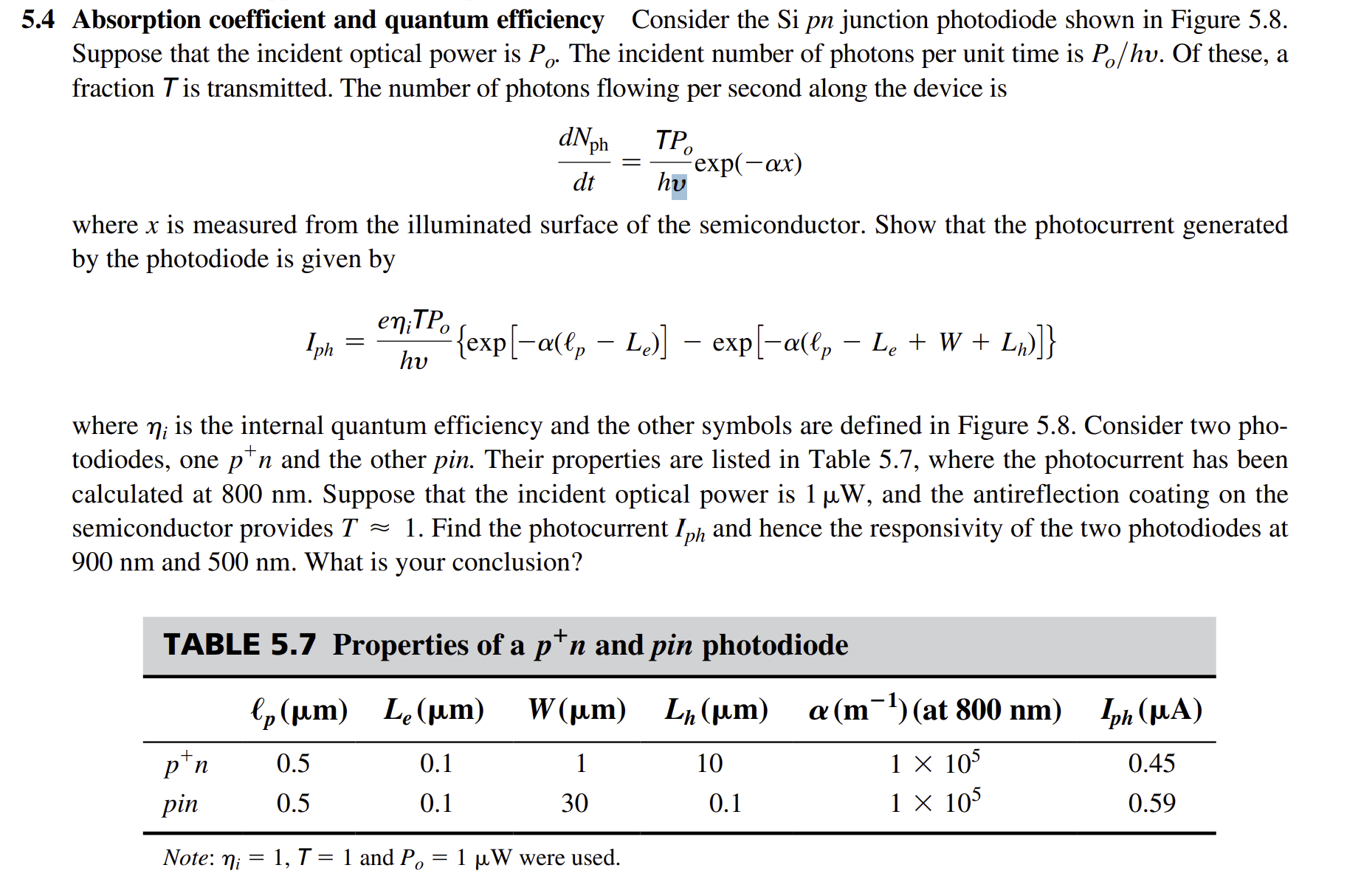Home /
Expert Answers /
Electrical Engineering /
5-4-absorption-coefficient-and-quantum-efficiency-consider-the-si-pn-junction-photodiode-shown-in-fi-pa503
(Solved): 5.4 Absorption coefficient and quantum efficiency Consider the Si pn junction photodiode shown in Fi ...
5.4 Absorption coefficient and quantum efficiency Consider the Si pn junction photodiode shown in Figure 5.8.
Suppose that the incident optical power is P_(o). The incident number of photons per unit time is (P_(o))/(h)v. Of these, a
fraction T is transmitted. The number of photons flowing per second along the device is
(dN_(ph))/(dt)=(TP_(o))/(hv)exp(-\alpha x)
where x is measured from the illuminated surface of the semiconductor. Show that the photocurrent generated
by the photodiode is given by
I_(ph)=(e\eta _(i)TP_(o))/(hv){exp[-\alpha (l_(p)-L_(e))]-exp[-\alpha (l_(p)-L_(e)+W+L_(h))]}
where \eta _(i) is the internal quantum efficiency and the other symbols are defined in Figure 5.8. Consider two pho-
todiodes, one p^(+)n and the other pin. Their properties are listed in Table 5.7, where the photocurrent has been
calculated at 800 nm . Suppose that the incident optical power is 1\mu W, and the antireflection coating on the
semiconductor provides T~~1. Find the photocurrent I_(ph) and hence the responsivity of the two photodiodes at
900 nm and 500 nm . What is your conclusion?
TABLE 5.7 Properties of a p^(+)n and pin photodiode
Note: \eta _(i)=1,T=1 and P_(o)=1\mu W were used.